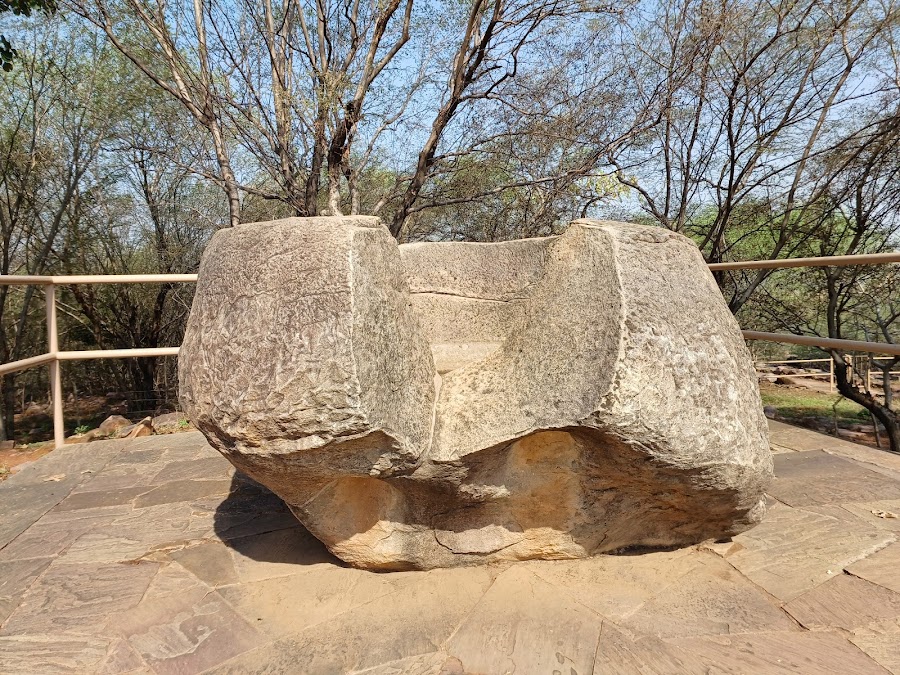
Great Bowl
Sanchi, India
- Explore surrounding stupas and monuments.
- Learn about Sanchi's Buddhist heritage.
- Photograph the impressive Great Bowl.
- Reflect on the monastic life.
Known for:
Description:
The Great Bowl at Sanchi is a massive, monolithic stone vessel located near the main stupa. Believed to have been used for distributing food to monks, this impressive bowl offers a glimpse into the communal life of the monastic community that once thrived here. Its sheer size is awe-inspiring, showcasing the craftsmanship and resources available during the Mauryan and subsequent periods. Visitors can admire the bowl's simple yet elegant design and imagine the bustling activity that once surrounded it. The Great Bowl is a tangible link to the past, offering a unique perspective on the daily routines and traditions of the Buddhist monks who called Sanchi home. It's a must-see for anyone interested in the history and culture of this UNESCO World Heritage Site.
History:
The Great Bowl's history is intertwined with the rise and patronage of Buddhism in Sanchi. It is believed to have been commissioned during the Mauryan period (3rd century BCE) or the subsequent Sunga dynasty (2nd century BCE), when Sanchi emerged as a significant Buddhist center. The bowl's purpose was likely to serve as a communal vessel for distributing food, likely rice or other grains, to the large monastic community residing at Sanchi. The sheer size of the bowl indicates the scale of the monastic population and the resources dedicated to their sustenance. Over the centuries, as Sanchi's fortunes fluctuated, the Great Bowl remained a silent witness to the changing times, eventually becoming a historical artifact showcasing the region's rich past. It stands as a testament to the enduring legacy of Buddhism in India.